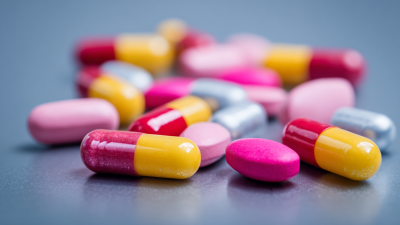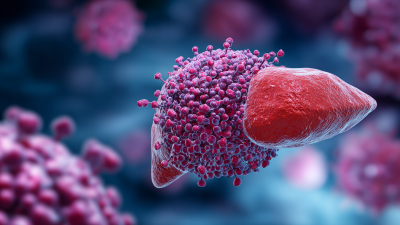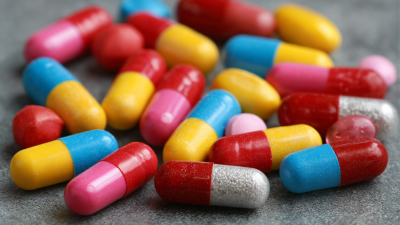Leave Your Message
The pharmaceutical landscape is evolving rapidly, particularly with the introduction of groundbreaking solutions for prevalent health issues such as Urinary Tract Infections (UTIs). Among these innovations is the Urinary Tract Infection Drug Nitroxoline, which is garnering attention at the 138th China Import and Export Fair 2025. According to recent industry reports from market research firms, UTIs affect millions globally, with an estimated incidence rate of 10.5 million cases per year in the United States alone, creating a significant demand for effective treatments. The World Health Organization has emphasized the need for new antibiotics, as resistance to traditional therapies is escalating. Nitroxoline, an established drug with a unique mechanism of action, presents a promising alternative that could address these urgent public health concerns while meeting the increasing demand highlighted by market analyses. This highlights the urgent need for innovative substances like Nitroxoline, aligning with broader trends in pharmaceutical development aimed at combating antibiotic resistance.

The recent explorations into the innovative features of nitroxoline highlight its multifaceted role beyond addressing urinary tract infections (UTIs). Originally recognized for its antibiotic properties and metal-chelating activity, nitroxoline has shown promising effects in preclinical models targeting Epstein-Barr virus-associated lymphoproliferation. This groundbreaking research reveals the potential of nitroxoline as a versatile agent in combating various infections, not limited solely to the urinary tract.
As nitroxoline continues to be showcased at events like the China Import and Export Fair 2025, its reformulation and application in the treatment landscape could signify a critical advancement in therapeutic strategies. The ability to inhibit the function of certain pathogens while maintaining its primary use in UTIs positions nitroxoline as an innovative contender in the pharmaceutical market, illuminating a path toward broader applications in infectious disease management and enhancing patient outcomes.
The demand for antibacterial medications, particularly in the realm of urinary tract infections (UTIs), is witnessing substantial growth in 2025. This trend can be attributed to the increasing prevalence of UTIs globally and the rising awareness of effective treatment options among patients and healthcare professionals. With the introduction of innovative drugs like Nitroxoline, the market is set to expand further, providing new avenues for patient care and management.
Additionally, the shifting landscape of antibiotic resistance is creating a pressing need for more targeted and effective therapies. As healthcare systems face challenges from resistant bacterial strains, the focus has turned to medications that not only treat infections but also mitigate the risk of resistance development. This has led to a surge in research and development activities within the pharmaceutical sector, ultimately catering to the evolving needs of the market. Consequently, events such as the China Import and Export Fair 2025 serve as vital platforms for stakeholders to engage, share insights, and explore collaborative opportunities that align with the growing demand for robust antibacterial solutions.
At the upcoming China Import and Export Fair 2025, there will be significant collaborative opportunities centered around innovative developments in urinary tract infection (UTI) drug Nitroxoline. With the global UTI market expected to reach $3.4 billion by 2026, stakeholders are increasingly eager to explore partnerships that can facilitate research, development, and distribution of this crucial medication. Nitroxoline, an established antibiotic, has recently garnered attention for its effectiveness against multidrug-resistant bacterial strains, making it a vital component in UTI management.
The fair will serve as an ideal platform for pharmaceutical companies, healthcare professionals, and researchers to connect and discuss growth strategies. According to a report by Research and Markets, the demand for alternative UTI treatments is surging, with a projected annual growth rate of 5.1% in the Asia-Pacific region over the next five years. Collaborative ventures focused on Nitroxoline could not only enhance its market penetration but also contribute to addressing the global health challenge posed by antibiotic resistance. Participants at the fair can expect to engage in meaningful discussions about joint ventures, technology sharing, and strategic alliances that promote innovation in UTI treatment.
The regulatory landscape for Nitroxoline, a promising drug for urinary tract infections (UTIs), is experiencing significant advancements in China. Recent developments signal a more streamlined approval process, driven by heightened demand for effective treatments amid rising antibiotic resistance. Regulatory bodies are actively revising guidelines to facilitate faster evaluations while ensuring safety and efficacy, paving the way for Nitroxoline's swift entry into the market.
At the China Import and Export Fair 2025, stakeholders will likely discuss the implications of these regulatory changes. Industry experts and healthcare professionals will gather to deliberate on how quicker approvals can align with the urgent need for innovative therapeutic options. This platform not only showcases Nitroxoline's potential but also emphasizes the collaborative efforts between regulators and pharmaceutical companies to enhance patient access to vital medications. The focus on Nitroxoline reflects a broader commitment to tackle public health challenges posed by UTIs in China and beyond.
The innovative developments surrounding Nitroxoline have the potential to redefine treatment paradigms for urinary tract infections (UTIs). Traditionally, UTIs have been managed with various antibiotics; however, the rise of antibiotic resistance has necessitated a shift in approach. According to a recent report by the World Health Organization, over 50% of UTI cases are now resistant to first-line antibiotic treatments. This escalating resistance emphasizes the need for alternative solutions, like Nitroxoline, which presents a promising avenue for effective management.
Nitroxoline, an older antibiotic gaining renewed attention, has demonstrated significant efficacy against both Gram-positive and Gram-negative bacteria, including strains resistant to common treatments. A study published in the Journal of Antimicrobial Chemotherapy highlighted that Nitroxoline had a success rate of over 90% in treating multidrug-resistant UTI pathogens. This positions it not only as a viable alternative but also as a catalyst for redefining UTI treatment protocols in a landscape increasingly burdened by resistance.
**Tip:** Healthcare providers should consider incorporating Nitroxoline into their UTI treatment plans, especially in cases of recurrent infections or when patients exhibit signs of antibiotic resistance.
Another important consideration is patient education on completing the full course of treatment with Nitroxoline, as this can help ensure effectiveness and reduce the risk of resistance. Engaging patients in discussions about their treatment options reinforces the collaborative effort needed to combat rising resistance in UTIs.
This chart illustrates the projected growth in the usage of Nitroxoline for Urinary Tract Infection treatment from 2018 to 2025, showcasing its increasing significance in redefining treatment paradigms.






